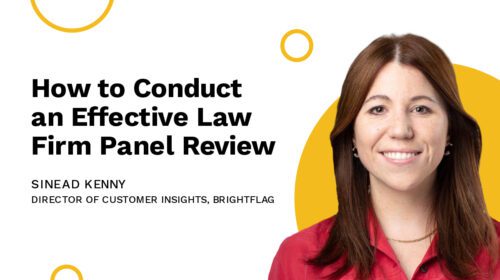The Ultimate Guide to Legal Data Analytics
Is your legal team drowning in a sea of matters and invoices? Legal data analytics tools can help you stay afloat and manage your workload more effectively.
Legal data analytics is all about identifying patterns and trends in your legal spend and matter information, and then making a plan of action based on those insights.
A data-driven approach to legal operations equips you with the tools to balance your workload, reduce matter cycle times, and save your business money.
In this guide, we’ll demystify legal data analytics. You’ll discover its key applications, learn which data points are critical to track, and get valuable insights on interpreting your data to drive meaningful action.
How Legal Data Analytics Are Used
Before delving into specifics, let’s outline the key areas where legal data analytics can substantially benefit your in-house corporate legal departments.
Cost Management
Legal data analytics allow you to dissect billed hours, scrutinize expenses, and make sure vendors are complying with your outside counsel guidelines.
Using the data pulled from your enterprise legal management software, you can identify which of your outside legal counsel are striking the right balance of quality legal advice and cost-effectiveness.
This analytical approach offers a new layer of financial transparency, helping you identify savings and anticipate future costs.
Operational Efficiency
It’s just as important to scrutinize your internal operations as it is to keep an eye on outside counsel costs.
With the right legal data analytics you can pull reports on how many matters each of your in-house attorneys is managing, which parts of your business are demanding the most of your legal department’s time, and how fast you are cycling through those matters.
What Data Should You Include In Your Reports?
By choosing the right data points to monitor and analyze, you’re laying the groundwork for more effective, targeted analytics that can drive real improvements in your legal operations.
Legal Spend
Your legal spend reporting should break down spending across matter types, vendors and department.
With that information in hand, you can identify when your legal spend is trending higher than anticipated, or assess which vendors do the best job of completing matters efficiently.
This information is also helpful for identifying what comprises the majority of your legal spend, and making informed decisions to reduce spend. Say most of your matters involve patent battles. You can match that work with whichever outside counsel has the most expertise in that area, then negotiate a bulk discount rate for moving all that work to their firm. Or, you can have strategic discussions with your product team to reduce IP infringements.
Matter Details
Every legal department deals with a variety of matters, each with its unique characteristics and complexities. Without a simplified, condensed summary report, it can be difficult to keep track of it all.
Matter reports show you who the internal lead is on a matter, and how many matters they have on their plate, which gives you insight into how workload is distributed across your team.
You can also see the different types of fee arrangements you have in place across all your vendors. Based on how those matters are tracking against budget, you can then make informed decisions about the best terms of engagement for future matters.
Matter reports also show you status updates at a glance so you can follow the progress of each matter.
Timekeeper Mix
Monitoring the balance between associates and partners on matters you instruct to outside counsel is essential. While partners bring experience and profound knowledge, they also come at a premium cost. Ensuring tasks align with expertise can prevent unnecessary legal spend.
For instance, while complex legal analysis might demand a partner’s attention, drafting memos and attending routine depositions are best suited for an associate.
Enterprise legal management software like Brightflag aggregates this timekeeper data so you can make comparisons across vendors. Through this report, you might discover one law firm is using far more partner time to finish similar work to their peers. You can use this information to negotiate better resourcing.
Regularly reviewing the timekeeper mix helps strike this balance and achieve optimal efficiency and cost-effectiveness.
Vendor Benchmarking
Enterprise legal management tools make it easy to create reports that highlight vendor performance.
You can benchmark outside counsel against how well they meet your legal billing guidelines. Other reports to have handy for assessing your vendors include how fast each law firm closes matters, and the rates they charge for their work, and qualitative assessments of the quality of their work product and their relationship management.
Tips for Interpreting Legal Data
Understanding the nuances of the data can help you transform raw numbers into actionable insights that influence when to take corrective action, when to deploy additional resources, and when to celebrate a job well done.
1. Use Key Performance Indicators (KPIs)
Think of KPIs as the pulse check for your legal department. They provide a snapshot of how well you’re progressing toward your goals.
To make sure you are managing costs, you should monitor indicators like legal spend per in-house lawyer and the ratio of in-house work to outside counsel work.
Gauge your team’s efficiency by looking at matter cycle time, matter resolution rate, and invoices approval times.
It’s essential to pick KPIs that align closely with your organizational objectives and can be tracked consistently. In doing so, you’re not just collecting data; you’re setting the stage for informed decisions.
2. Visualize Your Data
Graphs, charts, and dashboards translate complex data into visuals that are easier to digest and act upon. This is more than just eye candy; it’s a crucial step in making your data accessible and understandable to your team and stakeholders.
Effective visualization can reveal trends and correlations that might not be immediately apparent in raw data.
3. Convert Data into Actionable Insights
The ultimate goal is to turn your data into actionable strategies.
These should be concrete, implementable steps that directly contribute to achieving your goals. For example, if you find that one firm takes far longer to resolve patent infringement disputes than another, that’s a signal to refocus your resources for better efficiency.
4. Adapt and Review Regularly
Interpreting legal data is a cyclical process. Make it a habit to periodically review your metrics, adapt your KPIs, and fine-tune your strategies. Doing so ensures that your analytics are always aligned with any shifts in organizational goals, client needs, or industry standards.
At Brightflag, we know reviewing data and adapting your strategy can be more aspirational than practical for busy legal ops teams. You may want to pore through your data analytics to see if vendors are billing for excessive internal meetings, or make sure the blended rates your outside counsel is charging match their peers. But, there are many demands on your time.
That’s why your e-billing and matter management providers should provide a dedicated customer support manager to root out that information for you! Brightflag assigns a representative to be part of your team. We help unearth those kinds of insights during monthly meetings with your staff.
Book a demo with us today to experience the truth and power of superior legal spend analytics software. Let us help you unlock the potential of legal data analytics and drive better business outcomes.



